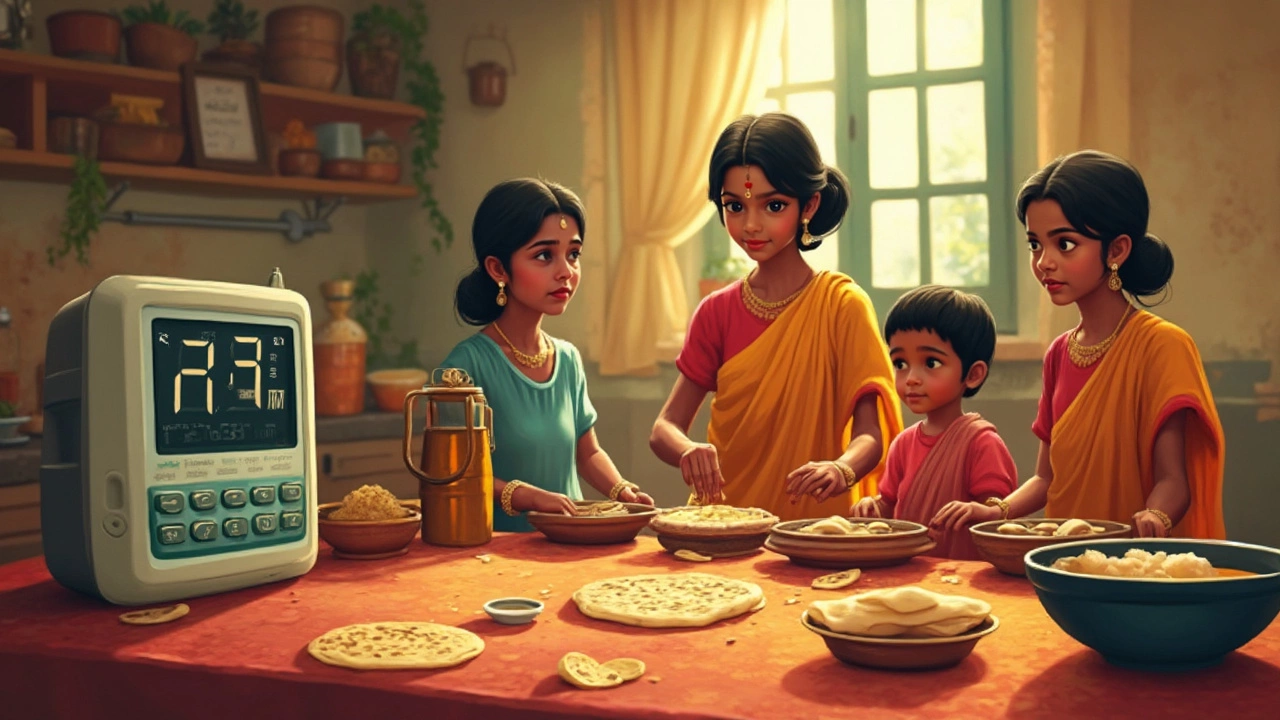Chapatis Intake: What You Need to Know
When talking about chapatis intake, the amount and quality of chapatis you eat each day. Also called roti, chapatis are a staple across India and a key source of carbs, fiber, and plant‑based protein. Understanding how much you should eat, how to keep them soft, and how small tweaks like adding baking soda, a leavening agent that lightens the dough or cooking oil, adds moisture and tenderness affect texture can transform a simple flatbread into a satisfying meal.
Chapatis intake requires knowledge of the dough's ingredients and technique. Whole wheat flour, the traditional base for chapatis, supplies dietary fiber and micronutrients. When you knead the dough too little, the gluten network stays weak, leading to flat, non‑puffing rotis. Rolling the dough to the right thickness—usually about 2 mm—helps steam generate the lift needed for a puff. Add a pinch of baking soda and you introduce tiny air bubbles, which encourages the classic balloon‑like puff. Switching the timing of oil addition—mixing it in after the first knead—creates a softer, more pliable crust.
Nutrition and Health Impact
From a health perspective, chapatis intake is closely linked to daily fiber and calorie goals. One medium chapati (about 40 g) offers roughly 120 kcal, 3 g of protein, and 2 g of fiber. Eating two to three chapatis per meal can provide steady energy without spiking blood sugar, especially when paired with lentils, vegetables, or lean meat. However, over‑indulging—say, more than five chapatis in one sitting—may add excess carbs and calories, which can affect weight management. Choosing whole wheat over refined flour boosts micronutrient intake, supporting heart health and digestion.
Beyond the basics, the way you cook chapatis influences their nutritional profile. Using a dry skillet keeps the calorie count low, while brushing the surface with a little ghee, clarified butter that adds flavor and healthy fats can improve vitamin absorption from accompanying veggies. If you’re aiming for a lighter version, a quick spray of cooking oil or a dab of butter after cooking is enough to keep the bread soft without adding too many extra calories.
Common problems—like chapatis that don’t puff, stay hard, or burn quickly—often trace back to a single factor: dough moisture. A hydration level of about 55‑60% (water to flour ratio) is ideal. Too little water makes the dough stiff, preventing steam formation; too much water creates a sticky dough that tears during rolling. Adjusting the water amount, letting the dough rest for 20‑30 minutes, and covering it with a damp cloth before cooking can solve most issues. If you still see flat chapatis, try sprinkling a pinch of baking soda or a dash of lemon juice—the acidity can react with the soda to create extra lift.
Lastly, chapatis intake isn’t just about the bread itself; it’s about the whole meal. Pairing chapatis with protein‑rich dishes like dal, paneer, or chicken balances the amino acid profile, while adding a side of leafy greens increases vitamins A and C. This combination supports muscle repair, boosts immunity, and keeps you full longer. When you plan your plate, think of chapatis as the base that ties flavors together and carries the nutrients of the dishes you serve on top.
Now that you’ve got a clear picture of how chapatis intake works— from dough prep and cooking tricks to nutrition and meal pairing—take a look at the articles below. You’ll find deep dives on why roti sometimes refuses to puff, how a dash of baking soda can change texture, the exact moment to fold oil into the dough, and more practical tips to make every chapati a perfect bite.

Roti Calories Calculator: Track Your Daily Intake Easily
Discover how a roti calorie calculator can help manage your daily intake with ease. Learn about the calories in one roti and how it relates to your Body Mass Index (BMI). This guide offers a step-by-step process to calculate how many chapatis you should consume daily. Explore local eating habits and consider the legal aspects of diet apps in India.